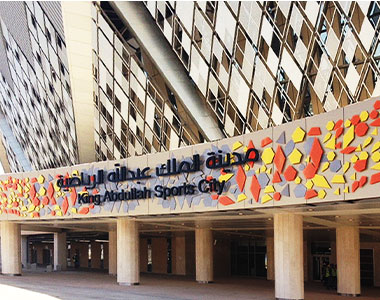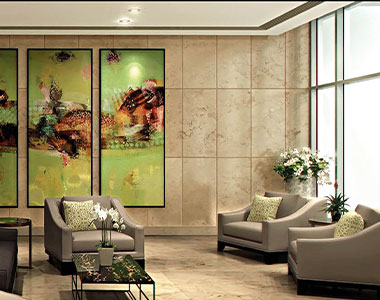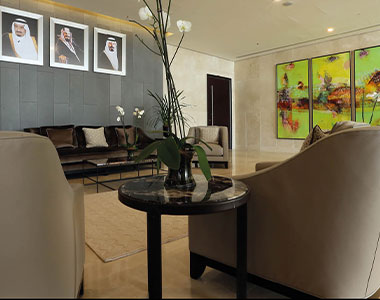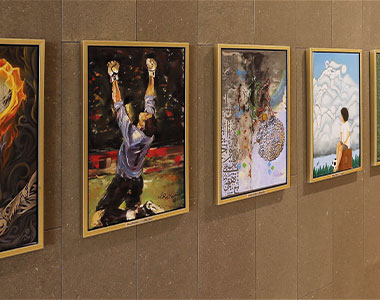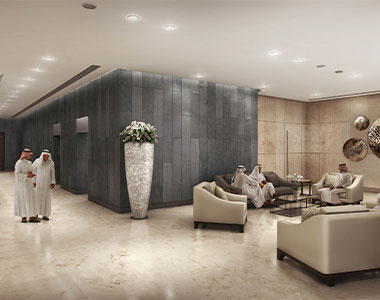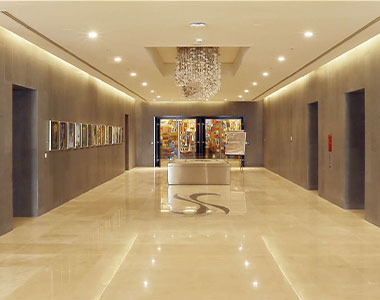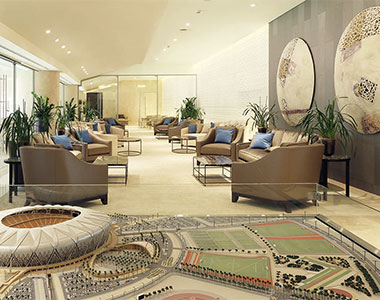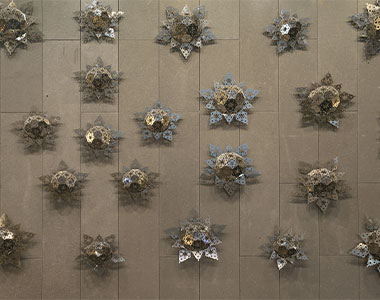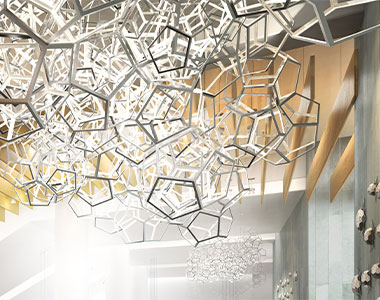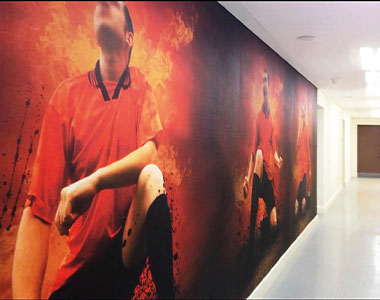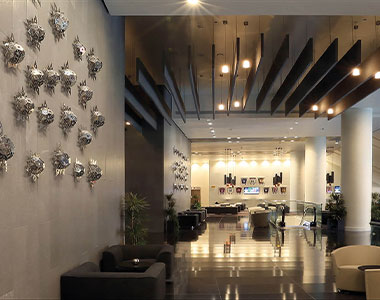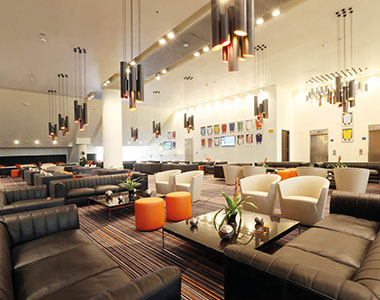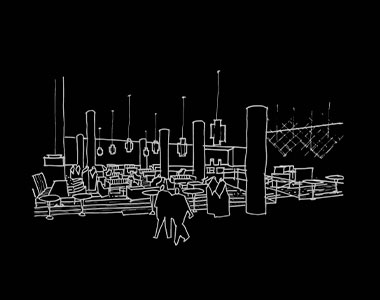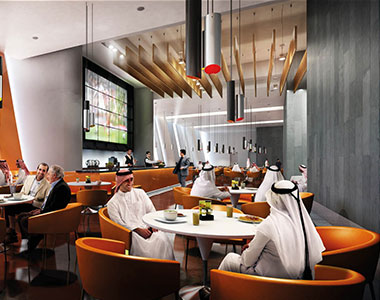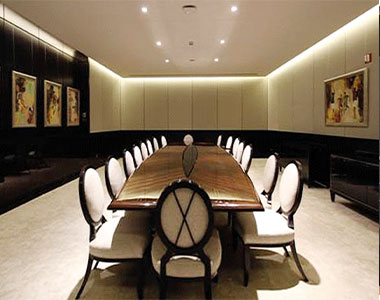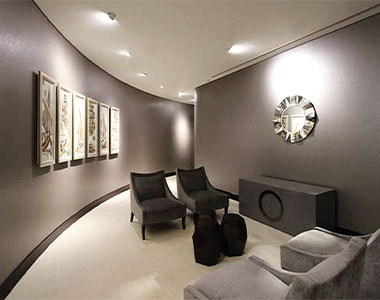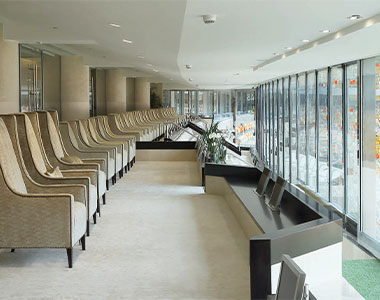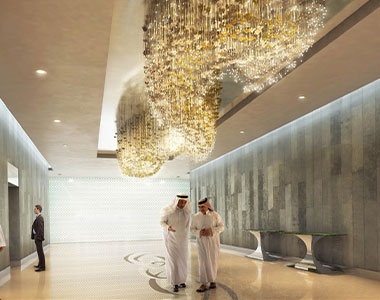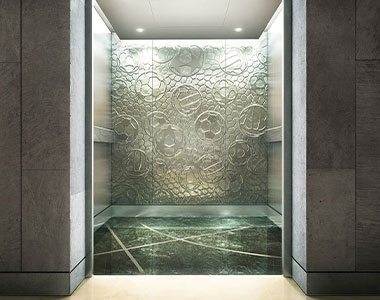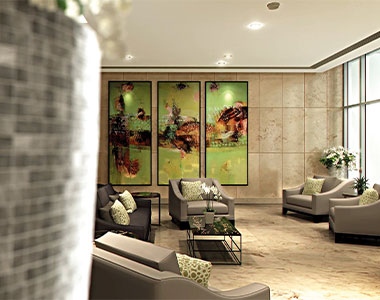

Inspiration
We were predominantly inspired to bring in the hidden beauty of the Jeddah landscape and Saudi Arabia in general to the interiors and to reflect the spirit of the indigenous charm of the country.
Unique properties/Project description by Savana Al-Khudairi
King Abdullah sports city was an exceptional project to be involved in. As an interior architect the general role assigned to me and my office was simple on the outset, to coordinate furniture, layouts and finishes for all the internal spaces for the stadium, but I found myself in an intersection. Most of stadium interiors are considered functional and borderline institutional except for certain VIP lounges and business suites, I guess because of the sports function and association of the visitors journey, this was an easy direction to take but I felt that we will be losing the spirit of the design and to a certain extent compromise it. I made it my role to take into consideration the vision set by the client, the concept portrayed by the architects and make the interiors connect with the exteriors to continue the design language throughout the stadium down to the smallest detail.
Challenges and Approach
This wasn’t an easy task, not only because of the nature of stadium interiors which is defragmented and disconnected due to its function, but also the language of connection is not an easy thing to achieve, it is not a simple finishes coordination exercise nor a selection of a furniture package that is easy to obtain and fit for purpose. Every shape, scale, finish, texture, furniture, lighting feature and art had to be selected together, speaking the same language, portraying the vision and connecting design elements in the best possible way and this was only looking at the aesthetic aspect but in addition to that the technical, procurement and costing considerations had to be addressed in parallel which added many layers of complexity. Now, that was a task and a half!
To work as a team in my organization and achieve the ‘one vision’ was my first challenge, I believe that designers, irrelevant of age and experience, have the right to show their creativity, to suppress this because of the name of a project, or the senior designer’s vision or for any other reason, is a form of a design crime. You might think that this is extreme, but for a creative mind that has the potential to grow, voicing ideas is everything and is so crucial to growth. But we had to do this carefully and the solution was to put the larger vision of connections of all aspects of the building aesthetics as a priority. Another challenge was the communication of that vision to the client. The main problem we faced was that our client was ‘everybody’, it was the architect, Saudi Aramco, the Royal protocol office, the main contractor even the inauguration team was a client! How can anyone satisfy the requirements of all these parties? We had to work with each party, the conclusion was ‘to listen’ and ‘seek solutions’ . I am not saying that all parties were satisfied, but ultimately the presented solutions brought to the table were unbiased and as practical and achievable as possible.
Creative/Research challenge
Amongst the hardest challenges we were faced with was the fact the KASC was under an accelerated program which caused massive issues related to the interior specified finishes and products, this has lead to an additional role beside being interior designers, we had to be a part of project management support team to Saudi Aramco to ensure the deliverance of a high quality space that is not compromised because of the acceleration, expectations were so high from all the team members and there was no room for mistakes. Talk about pressure!!
Lastly, a challenge that I expected which is not a new one 'women in construction' but i think this one was more specific ' women in construction in the Kingdom of Saudi Arabia' , I think this was genuinely a surprising situation considering that I have been going to KSA back and forth for the last three years I am fully adapted to it, it is not an issue of social restrains or religious and cultural view of professional women integrating fully in the work environment, let alone a construction site with 8003 employees, three of which are women!
The main issue was trust, it was almost a shock to many co-workers who hadn't expected a woman to attend site in such harsh environment, visiting factories in the middle of Saudi Arabia, and on top of that women who are actually knowledgeable about the subject at hand and who were on their side to resolve issues. Surprisingly this wasn't only relevant to the middle eastern teams but to the western professionals too. The achievement - I think a stadium a whole, is impressive with its massive scale, it is almost a sacred space.
Abstract Design & Research
After visiting many stadiums in the UK, and Europe as part of our design research, it was apparent that many of the interior spaces , not so much the general public and concourse areas, but more of the event functions, media, players zone and facilities are somewhat basic, the emphasis is in general on the spacial layout and functional synergy which is understandable., but what you end up with is an uncharacteristic basic space that is supposedly left waiting for the proponent or proprietor to utilise. The answer by many is that budget dictates that the focus should be on the actual stadium arena and whatever goes with it as opposed to the interior spaces and how these will work.
Objective –
Making a building of that scale and its nature of giving back to the people, to reflect from the inside out what it resembles and speaks for.
